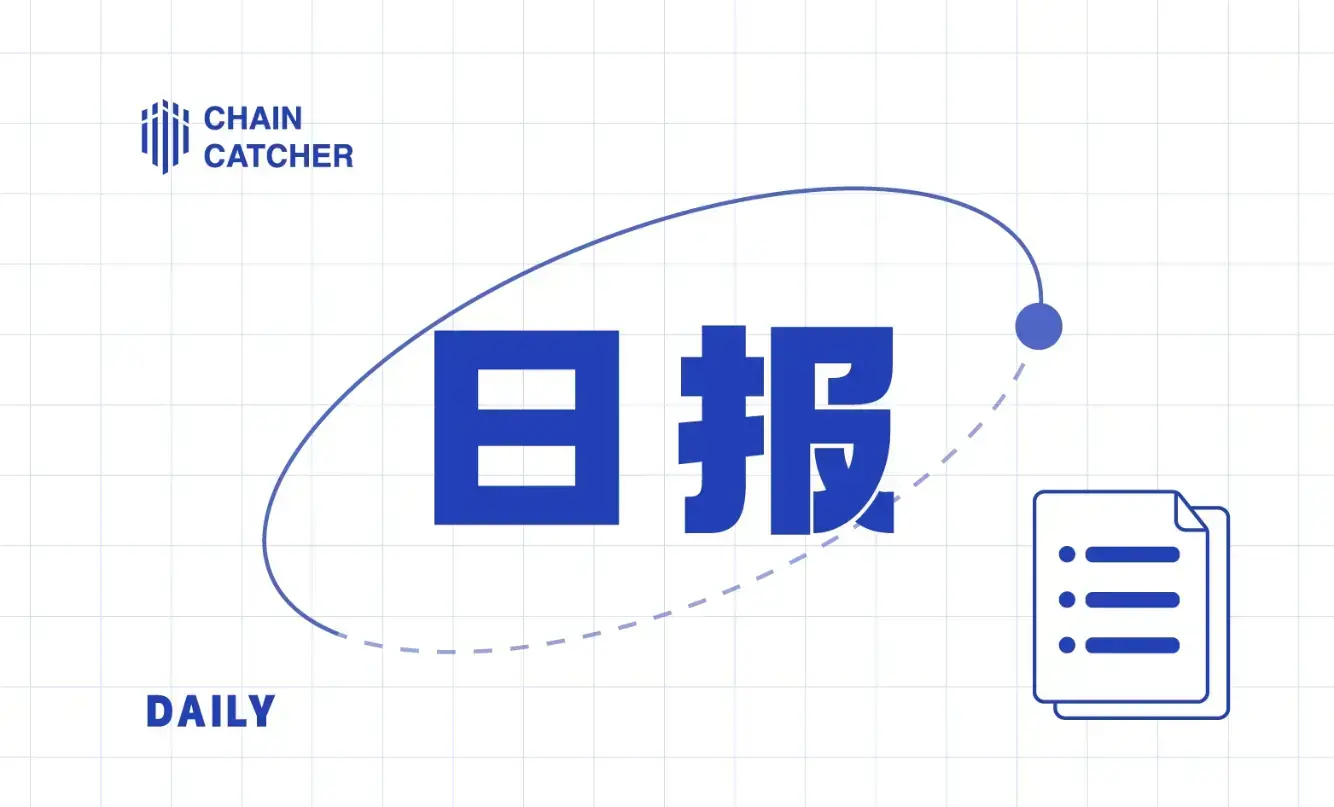JuCoin Exchange: Building an Unbreakable Security Defense for CEX from Multiple Dimensions
The construction of the security system for exchanges is a complex and continuously evolving system engineering project that requires multi-layered, deep defense to effectively reduce risks and ensure the safety of user assets. JuCoin Exchange always adheres to the principle of "safety first." This article will take JuCoin as an example to analyze the construction and defense practices of the CEX security system.
Core Principles of Security System Construction
The security system of JuCoin Exchange is built on the following six core principles, aiming to create a comprehensive and multi-layered security protection network:
- Defense in Depth: JuCoin adopts multiple security measures, setting up multiple barriers at various levels such as network, system, data, and application. Even if a single security layer is breached, other layers still provide protection, effectively increasing the difficulty and cost of attacks.
- Principle of Least Privilege: JuCoin strictly controls the permissions of system users and processes, granting only the minimum permissions necessary to perform their functions. This effectively reduces security risks caused by privilege abuse or leakage, minimizing potential losses.
- Continuous Monitoring and Incident Response: JuCoin has established a 24/7 monitoring system to monitor abnormal system behaviors in real-time and has formed a rapid response team. In the event of a security incident, they can quickly locate, isolate, and repair it, minimizing losses to the greatest extent.
- Security Audit and Penetration Testing: JuCoin regularly conducts internal and external security audits and commissions top international security agencies for penetration testing. By simulating hacker attacks, potential vulnerabilities are proactively identified and promptly repaired to ensure the system remains secure and reliable.
- Compliance and Regulation: JuCoin actively embraces regulation, applying for licenses globally and strictly adhering to relevant laws, regulations, and industry standards. Compliant operations not only enhance the credibility of the exchange but also serve as an important cornerstone for protecting user rights.
- User Security Education: JuCoin continuously invests in user security education, enhancing user security awareness through various channels and educating users on how to use strong passwords, enable two-factor authentication, etc., to collectively build a safer trading environment.
Key Technologies and Measures for CEX Security Defense - JuCoin Exchange Practices
JuCoin Exchange implements the above security principles into specific technologies and measures, constructing a multi-dimensional and three-dimensional security defense system:
- Advanced Threat Detection Systems: JuCoin has deployed AI-driven advanced threat detection systems for comprehensive security protection:
- Real-time Monitoring: 24/7 real-time monitoring of network traffic, system logs, user behaviors, etc., to promptly detect abnormal activities.
- Behavioral Analysis: Utilizing machine learning and artificial intelligence-based behavioral analysis techniques to identify suspicious behaviors deviating from normal patterns, such as abnormal logins, large transfers, and suspicious transactions.
- Threat Intelligence: Integrating with leading global threat intelligence platforms, such as AlienVault OTX, to obtain the latest threat information and timely update defense strategies to address known and unknown threats.
- Intrusion Detection and Prevention Systems (IDS/IPS): Deploying enterprise-level IDS/IPS systems, such as Fortinet, to detect and prevent malicious network attacks, including DDoS attacks, SQL injection, cross-site scripting attacks, etc.
Smart Contract Security Audit: JuCoin conducts strict security audits on all smart contracts used to ensure code security:
- Code Audit: Adhering to strict code audits conducted by top international third-party security audit companies to ensure the security, reliability, and compliance of contract code.
- Vulnerability Scanning: Using automated vulnerability scanning tools like Trail of Bits Slither to quickly detect known security vulnerabilities in smart contracts.
- Formal Verification: For key smart contracts related to core business, introducing formal verification techniques, such as Isabelle/HOL, to mathematically prove the correctness and security of contract code, minimizing risks.
- Continuous Monitoring: After smart contracts are deployed, continuous monitoring is conducted, and collaboration with security agencies like PeckShield is established to promptly discover and repair newly emerging vulnerabilities.
Multi-signature Wallet Operation and Management: JuCoin adopts multi-signature wallet technology combined with strict management systems to ensure asset security:
- Multi-signature Principle: Multi-signature wallets require multiple private keys to authorize transactions. Even if some private keys are leaked, attackers cannot transfer assets alone, greatly enhancing security.
- Key Management: The private keys of multi-signature wallets are stored in physically isolated HSM hardware security modules, safeguarded by core security team members located in different parts of the world, with a comprehensive key management process in place that complies with ISO27001 standards.
- Permission Control: Reasonably setting the signing threshold and permission allocation for multi-signature wallets, requiring 3/5 or even higher proportions of signatures for key transactions to ensure transaction security and efficiency.
- Operational Process: Establishing extremely strict operational processes for multi-signature wallets, such as transaction initiation, multi-level approval, multi-party signing, broadcasting, etc., with all operations needing to be meticulously recorded and subject to security audits.
Cold and Hot Wallet Management Solutions: JuCoin implements advanced cold and hot wallet separation storage solutions to maximize the security of user assets:
- Cold Wallet Storage: The vast majority of user assets (over 99%) are stored in physically isolated offline cold wallets, which are monitored 24/7 by dedicated personnel, significantly reducing the risk of being hacked.
- Hot Wallet Usage: Only a minimal amount of funds (less than 1%, far below the industry average) is kept in hot wallets, used solely to support daily operations and facilitate quick user withdrawals. Hot wallets are deployed under a multi-layered security defense system, including multi-signature, strict access control, and real-time security monitoring.
- Fund Transfer Process: Establishing bank-level fund transfer processes between cold and hot wallets, requiring strict multi-level authorization and security audits for transferring funds from cold wallets to hot wallets to ensure the security and controllability of the fund transfer process.
- Regular Audits: Independent third-party auditing agencies conduct regular audits of the fund storage and transfer situations of cold and hot wallets to ensure fund safety and clear accounts.
Multi-signature Technology Implementation: JuCoin is always at the forefront of the industry in the implementation of multi-signature technology:
- Technology Selection: Flexibly selecting the most suitable multi-signature technology solutions based on the specific needs and security levels of different cryptocurrencies and business scenarios. Currently, various advanced technology solutions are adopted, including multi-signature based on HSM hardware wallets and multi-signature based on MPC (multi-party computation).
- Parameter Configuration: Reasonably configuring multi-signature parameters based on risk assessment results, such as dynamically adjusting signing thresholds, key quantities, and key types, to achieve the best balance between security and usability.
- Secure Implementation: When implementing multi-signature technology, special attention is paid to secure key generation, high-strength encrypted storage, remote backup, disaster recovery, and comprehensive security design of the transaction process.
- Compatibility: When selecting technology, fully considering the seamless compatibility of multi-signature technology with the existing systems and business processes of the exchange to ensure that security is enhanced without introducing any new security risks, while optimizing user experience.
Warnings from Major Typical Events
Looking back at the development history of cryptocurrency exchanges, several major security incidents have occurred, sounding alarms for the industry:
Mt.Gox Exchange Theft Incident (2014): The early largest Bitcoin exchange Mt.Gox went bankrupt due to multiple theft incidents, warning CEXs to pay close attention to private key security and timely repair of system vulnerabilities.
Coincheck Exchange Theft Incident (2018): The Japanese exchange Coincheck was hacked for NEM coins, resulting in significant losses, once again emphasizing the importance of cold and hot wallet separation and multi-signature technology.
Binance Exchange Theft Incident (2019): Binance Exchange was hacked for 7,000 Bitcoins, indicating that API security management is also an indispensable part of CEX security.
KuCoin Exchange Theft Incident (2020): KuCoin Exchange was hacked for a large amount of cryptocurrency assets, reminding CEXs to continuously strengthen internal security management and supply chain security.
Since its establishment, JuCoin has never experienced any major security incidents, thanks to its unwavering adherence to the principle of "safety first," continuous investment of substantial funds and technical resources, and the construction and ongoing upgrading of the exchange's security system.
Analysis and Reflection on the Bybit Cryptocurrency Asset Theft Incident
Recently, Bybit Exchange suffered a theft incident involving $1.4 billion in cryptocurrency assets, once again prompting deep reflection on CEX security within the industry. Analysis indicates that this incident was likely an APT attack initiated by the Lazarus Group (a North Korean hacker organization), targeting Bybit's Ethereum multi-signature cold storage wallet, dubbed "the largest cryptocurrency theft in history." Preliminary analysis reports also point to failures in operational security.
Possible Criminal Process (Speculation):
Early Penetration and Malicious Contract Deployment: Attackers may have begun APT penetration into the Bybit exchange system as early as February 19, 2025, or even earlier, lurking for a long time and deploying malicious contracts.
Locating Multi-signature Wallet and Replacing Contract: Attackers precisely located the multi-signature cold wallet storing a large amount of ETH assets at Bybit Exchange and replaced the Safe implementation contract of Bybit's multi-signature cold wallet with a pre-deployed malicious contract on February 21, which was the most critical step in the attack incident.
Key Leakage or Cracking and Multi-signature Authorization Bypass: Attackers may have previously stolen or cracked a sufficient number of multi-signature private keys and, after the malicious contract replacement was completed, utilized backdoor functions to bypass the normal multi-signature authorization mechanism, successfully transferring $1.4 billion worth of ETH and stETH assets from Bybit's Ethereum cold wallet.
Withdrawal Rush and Industry Mutual Assistance: The Bybit theft incident triggered market turbulence and user panic, with several exchanges such as Bitget, MEXC, and KuCoin providing industry assistance, alleviating Bybit's liquidity pressure and market panic.
Weaknesses in CEX Security:
- Operational security risks are the core weakness: The Bybit incident indicates that even with high-security technologies like multi-signature and cold wallets, vulnerabilities in operational security management can still lead to catastrophic security incidents.
- The need to enhance defenses against Advanced Persistent Threats (APT): CEXs need to deploy more advanced and intelligent threat detection and defense systems and establish professional security teams and APT offense and defense drill mechanisms to effectively improve defenses against unknown advanced threats.
- The complexity and risks of key management in multi-signature wallets coexist: While multi-signature wallet technology enhances security, it also brings complexity to key management. Any negligence or vulnerability in any link may introduce new security risks, and one should not overly rely on the technology itself but focus on the implementation and management details.
- Internal personnel risks remain one of the biggest challenges to CEX security: The security of CEXs heavily relies on the professionalism, integrity, and security awareness of internal personnel. Continuous strengthening of internal security management and establishment of a comprehensive internal risk control system are essential to minimize internal personnel risks.
Building a Safer CEX System: JuCoin Exchange's Multi-Dimensional Security Enhancement Plan
To construct a more unbreakable CEX system, JuCoin is continuously enhancing security across multiple dimensions based on existing security technologies and measures:
Continuously Strengthening Advanced Threat Detection Systems:
- Deep Integration of AI and Machine Learning: Increasing investment in AI and machine learning to train more advanced threat detection models, enhancing threat intelligence analysis capabilities, and achieving more precise identification and prediction of unknown threats.
- Building a More Comprehensive Security Information and Event Management (SIEM) System: Further upgrading the SIEM system to integrate more comprehensive security data, optimizing log analysis and correlation analysis algorithms, achieving centralized monitoring, intelligent analysis, and rapid response to security events across the entire platform, and reducing the average response time (MTTR) for security events to minutes.
- Comprehensive Deployment of UEBA (User and Entity Behavior Analytics) Systems: Fully deploying UEBA systems to monitor user and entity behavior patterns in real-time, automatically identifying abnormal behaviors based on AI algorithms, and proactively discovering and accurately warning against risks such as internal threats, account theft, and API abuse.
- Normalizing and Practicing Red Team Drills: Making red team drills a normalized security operation mechanism, with a red team composed of top global security experts simulating real hacker attack scenarios to conduct comprehensive and high-intensity penetration testing and practical verification of the exchange's security defense system, continuously discovering and repairing potential deeper security vulnerabilities.
Continuously Strengthening Smart Contract Security Audits:
- Implementing Stricter Audit Standards: Enforcing smart contract audit standards far exceeding the industry average, introducing advanced audit techniques such as fuzz testing and symbolic execution on top of existing code audits, vulnerability scanning, and formal verification to achieve 100% code coverage testing of smart contract code, ensuring zero vulnerabilities and zero risks.
- Implementing a "Multi-party + Cross" Audit Mechanism: Maintaining deep cooperation with top international security audit companies, innovatively introducing a "multi-party audit + cross audit" mechanism in important smart contract audit stages to maximize the objectivity, comprehensiveness, and professionalism of audits.
- Establishing a "Vulnerability Bounty Program": Continuously operating and upgrading the "vulnerability bounty program," significantly increasing bounty amounts, and establishing closer cooperation with the global white-hat hacker community to build an innovative security defense system of "global white-hat hackers co-building security."
- Establishing a "Rapid Response and Hot Fix Mechanism for Smart Contract Security Vulnerabilities": Establishing a 24/7 rapid response and hot fix mechanism for smart contract security vulnerabilities to ensure that vulnerability analysis, repair plan formulation, code hot fixes, security testing, and deployment are completed in a very short time, reducing the risk of vulnerabilities being exploited to the greatest extent.
Continuously Optimizing Multi-signature Wallet Operation Principles and Management:
- Comprehensive Upgrade of HSM Hardware Security Modules: Fully upgrading HSM hardware security modules, adopting new generation HSM hardware with higher security levels and performance, and introducing a multi-HSM hardware redundancy backup mechanism to maximize the security of multi-signature wallet private keys.
- Innovatively Introducing "Key Sharding + Geographical Distribution" Technology: Based on key sharding technology, innovatively introducing the concept of "geographical distribution" to disperse the key shards of multi-signature wallets across multiple highly secure physical locations worldwide, eliminating the risk of private key leakage from a physical standpoint.
- Building a "Biometric + Hardware Token + Geographical Location Triple Authentication and Authorization Mechanism": Innovatively constructing a "biometric + hardware token + geographical location triple authentication and authorization mechanism" in the multi-signature transaction process, raising the security strength of authentication and authorization to unprecedented heights.
- Creating a "Fully Traceable, Fully Visualized, Fully Automated Intelligent Security Audit Log and Monitoring Platform": Heavily investing in a new generation of security audit log and monitoring platforms to achieve full-process recording of all operational logs of multi-signature wallets, fully visualized display, fully automated intelligent analysis, and real-time risk warnings, realizing comprehensive security audits and monitoring of "pre-warning, in-process blocking, and post-tracing."
Continuously Improving Cold and Hot Wallet Management Solutions:
- Introducing an "AI-Driven Dynamic Cold and Hot Wallet Intelligent Balancing System": Innovatively introducing an "AI-driven dynamic cold and hot wallet intelligent balancing system" that uses AI algorithms to predict key indicators such as trading volume, user withdrawal demands, and market volatility risks in real-time, dynamically and intelligently adjusting the fund ratios of cold and hot wallets to minimize the proportion of funds stored in hot wallets.
- Exploring "Fully Automated, Zero Human Intervention Cold and Hot Wallet Fund Transfer Technology": Actively exploring "fully automated, zero human intervention cold and hot wallet fund transfer technology" under the premise of ensuring absolute security, such as utilizing trusted execution environments (TEE), multi-party computation (MPC), and other cutting-edge technologies to minimize risks that may arise from human operations.
- Building a "Multi-Dimensional, Three-Dimensional, Intelligent Linked" Hot Wallet Security Protection System: Constructing a "multi-dimensional, three-dimensional, intelligent linked" hot wallet security protection system, deploying dozens of security protection technologies and devices on the hot wallet server side, and intelligently linking all security devices and systems to achieve the highest security protection level of "single-point threat triggering, full-platform collaborative defense."
- Establishing "Same City + Remote + Overseas" Multi-Active Disaster Recovery Centers: Building "same city + remote + overseas" three-location "multi-active" data centers and disaster recovery systems to achieve real-time synchronous backup and second-level switching of all critical data, ensuring that the exchange's business can continue, stabilize, and operate securely under any extreme circumstances.
Protecting the Property Safety of Cryptocurrency Investors: JuCoin Exchange's Ultimate Mission
Establishing the world's safest and most trustworthy cryptocurrency trading platform to maximize the protection of cryptocurrency investors' property safety is JuCoin's eternal original intention and mission. JuCoin will continue to invest massive resources, continuously innovate security technologies, iterate security systems, optimize security processes, and strengthen security management, unwaveringly building the most unbreakable security defenses for global cryptocurrency investors, allowing every user who chooses JuCoin to trade cryptocurrency assets with true peace of mind, confidence, and safety, and to collectively embrace the bright future of cryptocurrency.
Summary
The security construction of CEX is a never-ending, continuously evolving system engineering project that requires relentless learning and innovation, continuously drawing on and integrating the most advanced security technologies and best security practices. JuCoin Exchange will continue to uphold the principle of "safety first," continuously enhance security protection capabilities, and provide users with safe, reliable, and trustworthy cryptocurrency trading services.
Website: https://www.jucoin.com
Media inquiries please contact Email: Marketing@jucoin.com









